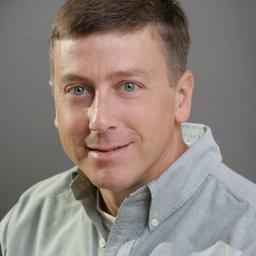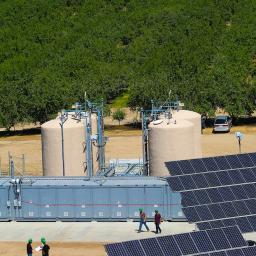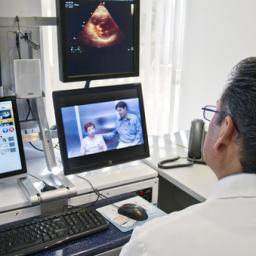Drone's eye view of a fireworks display
Here's a cool little video: This guy piloted a heli-drone through an ongoing fireworks display. The footage is pretty awesome. Looks I might have to go buy myself a quadracopter or equivalent after all!
 American like to talk about progress and technological innovation, but they (we) get pretty quiet when it comes to our cars. Most American cities are increasingly nightmarish urban centers, choked with car traffic and foul with all the worst impacts of a society that has chosen the freedom of individual, automotive transportation and eschewed public transport in most of its forms. Everybody wants "reform" but few are actually doing it with much success.
American like to talk about progress and technological innovation, but they (we) get pretty quiet when it comes to our cars. Most American cities are increasingly nightmarish urban centers, choked with car traffic and foul with all the worst impacts of a society that has chosen the freedom of individual, automotive transportation and eschewed public transport in most of its forms. Everybody wants "reform" but few are actually doing it with much success.But in a state that recently voted to legalize the retail sale of marijuana, change is clearly in the wind. Ten years ago, Denver's new mayor (and current Colorado governor) John Hickenlooper began to ramp up a campaign to convince voters to approve an ambitious expansion of the region's embryonic light rail network. A similar plan - fuzzy on such key details as routes and cost - had been defeated in a 1997 referendum. In 2004, the region's voters approved $4.7 billion of new debt for the FasTracks program. The plan, to add 121 miles of new commuter and light-rail tracks to the region, 18 miles of bus rapid transit lanes, 57 new rapid transit stations, and 21,000 park-and-ride spots, was approved 58-to-42, precisely reversing the results of the '97 referendum. (The pricetag has since risen to $7.8 billion.)By building a multi-poled system, RTD is tailoring transit to the contemporary metropolis. Crucially, by building it in conjunction with high-density transit-oriented development, the agency is also scheming to change the very nature of the American metropolis. That's why, when it comes to the future of transportation on this continent, Denver may be the city to watch.
 A Florida Scientist claims to have found the secret of short, intense workouts.
A Florida Scientist claims to have found the secret of short, intense workouts.In the last few years, the benefits of short, intense workouts have been extolled by both researchers and exercise fans as something of a metabolic panacea capable of providing greater overall fitness, better blood sugar control and weight reduction-all of it in periods as short as seven minutes a few times a week.
Now, in a new study, scientists from the Florida campus of The Scripps Research Institute (TSRI) confirm that there is something molecularly unique about intense exercise: the activation of a single protein.
 The last major problem of renewable power is energy storage for off-production times. The sun may go down at night, but our electricity demand continues. Towards solving this problem, EnerVault has created a 250-kilowatt iron-chromium redox flow battery at a demonstration storage project in California's Central Valley.
The last major problem of renewable power is energy storage for off-production times. The sun may go down at night, but our electricity demand continues. Towards solving this problem, EnerVault has created a 250-kilowatt iron-chromium redox flow battery at a demonstration storage project in California's Central Valley.One of the advantages of a flow battery is that the energy capacity can be expanded by installing larger tanks of the active material. Also, flow batteries are relatively inexpensive per kilowatt-hour compared to lithium-ion batteries and can provide power for multiple hours.At less than $250 per kilowatt hour, redox flow batteries are cost comparable with gas-fired peaking power plants and are logical companions to renewable power generation.
 Concerns over errors in health articles on Wikipedia have caused some scientists to warn against using the free encyclopedia to self diagnose medical conditions.
Concerns over errors in health articles on Wikipedia have caused some scientists to warn against using the free encyclopedia to self diagnose medical conditions.Most Wikipedia articles representing the 10 most costly medical conditions in the United States contain many errors when checked against standard peer-reviewed sources. Caution should be used when using Wikipedia to answer questions regarding patient care.
 I stumbled across Science Magazine's Experimental Error column written by Adam Ruben this week. What caught my eye? Adam's latest entry entitled "Forgive Me, Scientists, for I Have Sinned" , where Adam describes numerous ways he has felt and acted in an entirely imperfect and human way, but not as he might imagine a "good scientist" is supposed to feel or behave. Highlights from the article include: (1) "I remember about 1% of the organic chemistry I learned in college. Multivariable calculus? Even less.", (2) "I have gone home at 5 p.m.", and (3) "I have felt like a fraud, not once, but with such regularity that I genuinely question whether anyone has noticed I don't belong here.... I have delusions that people will read this confession and applaud my bravery for identifying a universal fear." Adam Ruben is a molecular biologist-come-comedian who teaches a standup comedy class at Johns Hopkins University, providing a fresh take on the non-meritocracy of science careers, if nothing else.
I stumbled across Science Magazine's Experimental Error column written by Adam Ruben this week. What caught my eye? Adam's latest entry entitled "Forgive Me, Scientists, for I Have Sinned" , where Adam describes numerous ways he has felt and acted in an entirely imperfect and human way, but not as he might imagine a "good scientist" is supposed to feel or behave. Highlights from the article include: (1) "I remember about 1% of the organic chemistry I learned in college. Multivariable calculus? Even less.", (2) "I have gone home at 5 p.m.", and (3) "I have felt like a fraud, not once, but with such regularity that I genuinely question whether anyone has noticed I don't belong here.... I have delusions that people will read this confession and applaud my bravery for identifying a universal fear." Adam Ruben is a molecular biologist-come-comedian who teaches a standup comedy class at Johns Hopkins University, providing a fresh take on the non-meritocracy of science careers, if nothing else. What do dating sites and research facilities have in common? More than you think, apparently, at least in the case of the Neglected Tropical Disease research, who is increasingly benefitting from the website technology used by dating sites to encourage sharing and collaboration across research projects. Says Trudie Lang, researcher from the University of Oxford, UK:
What do dating sites and research facilities have in common? More than you think, apparently, at least in the case of the Neglected Tropical Disease research, who is increasingly benefitting from the website technology used by dating sites to encourage sharing and collaboration across research projects. Says Trudie Lang, researcher from the University of Oxford, UK:Modern technology, such as wiki-style and dating sites software, allows scientists to "organise information in a very clever way", she added. "As scientists, we're rubbish at sharing," Lang said. "Unless we share the methods by which we collect the data, it won't be of much use."Sounds good to me. It's easy to believe researchers all collaborate in a utopian bubble of sharing and cooperation, until you see what really happens for yourself. Anything that encourages information sharing and careful stewardship of scarce research funding has got to be a good thing, and if that gets a few scientists a date, too, that's just bonus.
 Here's one place you didn't expect to find application of nanotechnology: your sunscreen. And here's one place you might have been surprised to find leading the race for scientific innovation in this sector: Mexico. Maybe it's because they've got a lot of sun. From the article:
Here's one place you didn't expect to find application of nanotechnology: your sunscreen. And here's one place you might have been surprised to find leading the race for scientific innovation in this sector: Mexico. Maybe it's because they've got a lot of sun. From the article:A high-tech dispersion physicochemical process was designed, which will ensure that the nanoparticles remain stable in the formulation of the final product. The advantage in the cosmetic formula is that using titanium dioxide nanoparticles increases the photo protective efficacy, since it has been demonstrated that the lower the particle size the better the protective UV efficiency. In addition to the cosmetic industry, the company seeks to implement the nanoparticles on other products, such as waterproofing paints, coatings and plastics, because it improves resistance to environmental exposure.The cosmetics industry - and sunscreen is a part of it - is one of the most competitive sectors in the market, and the race to identify new products and processes is a high-intensity one. Bonus: innovative sunscreen will lead to some sexy new advertisements, unlike nanotech laboratory gloves.
 There's a great article over at Hackaday about intelligent roadways .
There's a great article over at Hackaday about intelligent roadways .The idea of a road is relatively simple - a durable path from point A to point B. Development of roadways usable for wheeled carriages has been perfected over the centuries. The Romans, for instance, used a base layer of crushed limestone that would let water flow out, preventing clay soil from turning into mud. Some Roman roads were topped with six sided capstones, also known as pavers, many of which still exist today. The invention of the horseless carriage necessitated roadways that could be used at high speeds. Tarmac, asphalt and concrete roads followed, and thus ends our short venture into the history of roads. Roadways simply haven't changed much since then. Sure, we've painted some lines on them, even etched grooves in some to prevent accidents, but the core technology of the road is the same as it was a hundred years ago. Until now.Check out the design, built by Solar Roadways (spoiler: they're looking for funding ). With minor circuitry, these panels absorb solar energy by day, and stay illuminated at night. A mild current melts snow and keeps them ice-free. LEDs can provide the horizontal signage (cross walks, bike lanes, etc.) The possibilities start there. If I had one of these, I'd pave my driveway with them, with a bright, red "Go Away" at the end from 6PM to dawn.
 Noted and well-respected theoretical physicist Steven Hawking discusses the potential of advanced artificial intelligence in a recent article published in The Independent. He frames the discussion in terms of "incalculable benefits and risks." Although even the original article is fairly superficial, it raises a good point for discussion: how can we learn to understand and prepare for the implications of this technology today? And who are the thought leaders who are asking (and answering) the right questions about this powerful science ?
Noted and well-respected theoretical physicist Steven Hawking discusses the potential of advanced artificial intelligence in a recent article published in The Independent. He frames the discussion in terms of "incalculable benefits and risks." Although even the original article is fairly superficial, it raises a good point for discussion: how can we learn to understand and prepare for the implications of this technology today? And who are the thought leaders who are asking (and answering) the right questions about this powerful science ?